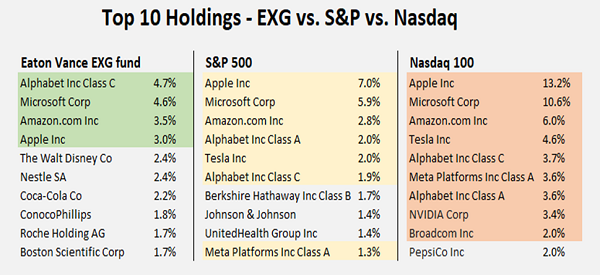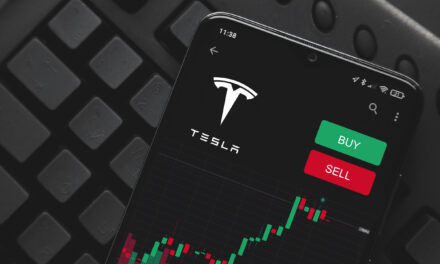A popular adage in the investing world is “Wall Street hates uncertainty.” Unfortunately, many investors have been living in a world of surprises and uncertainty for all of 2022.
Some of that is beyond their control, including volatility caused by Russia’s aggression in Ukraine. However, a lot of the challenges we face in 2022 are by no means unexpected.
You simply had to pay attention.
In talking with family and friends, I’ve found that one of the biggest risk areas that gets overlooked in their personal portfolios is an over reliance on Big Tech. This is a particularly important topic right now, with the Nasdaq down about 10% in the last 30 days as mega-cap technology companies have cratered.
After the bloodbath we’ve seen in this sector in recent weeks, I’d like to spend some time today explaining some of these risks that unwitting investors often take on — and more importantly, how to play tech in a more diversified, income-oriented way that can pay you as much as 10% in monthly dividends!
Avoid Big Tech Bias
When I talk about the risk of Big Tech investing, I’m not talking about the broader rotation from growth to value, or the risks of momentum stocks in general. I’m talking about something much more structural, in the way that modern investment vehicles are formulated.
First, it’s important to understand how major indexes are market-cap weighted. That means the biggest stocks represent an outsized share of total assets. And seeing as most of the biggest corporations on the planet are Big Tech mainstays, that naturally means Silicon Valley holds outsized sway.
Consider that the top two positions in the S&P 500 index are Apple Inc. (Nasdaq: AAPL) at 7%, Microsoft Corp. (Nasdaq: MSFT) and almost 6%. That’s 13% of the entire benchmark in two trillion-dollar tech companies. The Nasdaq 100 is even worse, with 13% and 10% weightings respectively for nearly a quarter of the entire index in that pairing!

In other words, if you own traditional index funds… you are in many ways a Big Tech investor whether you like it or not.
According to a 2021 analysis, index funds now account for as much as 30% of the U.S. stock market. But it’s disturbing how many of those folks don’t understand this dynamic.
Index funds certainly have some benefits. But they have some serious drawbacks too — both through the risks associated with a Big Tech bias, as well as the hard reality that many of these firms pay peanuts in dividends.
So allow me to offer up an alternative to you as a core holding — a closed-end fund (CEF) that currently yields 10.1% as I write, and offers a more diversified portfolio that isn’t as reliant on technology.
That fund is the Eaton Vance Tax-Managed Global Diversified Equity Income Fund (NYSE: EXG).
Snag 10.2% Monthly Dividends in this Diversified CEF
This fund is designed in many ways like your typical large-cap equity fund. However, it has a few important differences.
Firstly, it is more evenly distributed in its makeup. Though only boasting 80 or so total components, no single position is weighted at more than about 4.5% at present.
It also offers exposure to select multinationals outside the U.S. — stocks like Switzerland pharma giant Roche Holdings AG (OTC: RHHBY) that gets left off domestic indexes but is in no way inferior to U.S. drugmakers.
And most importantly, it overlays a defensive and income-oriented strategy that involves selling covered call options on the large-cap positions in the portfolio. This is not an aggressive strategy that involves making risky bets with leverage, but rather selling options on stocks managers already own — and then passing the premiums for those options contracts via generous, monthly distributions.
Consider that the EXG fund just boosted its monthly payout 12% in mid-2021, and currently yields a mammoth 10.1% yield! As an extra sweetener, that dividend is paid every 30 days instead of once per quarter.
Yes, the fund does have some decent exposure to the tech sector and has slumped lately along with a lot of other investments. And yes, there is clearly still risk right now in the stock market that may make you reluctant to throw new money at an investment like this until the dust has settled.
But if you can snag a nearly double-digit yield in a more diversified way … why in the world would you stick with the typical index funds out there?
To learn more about generating monthly dividends as high as 8%, click here.




